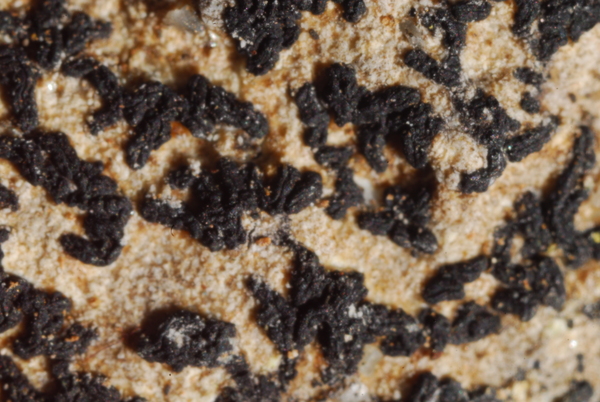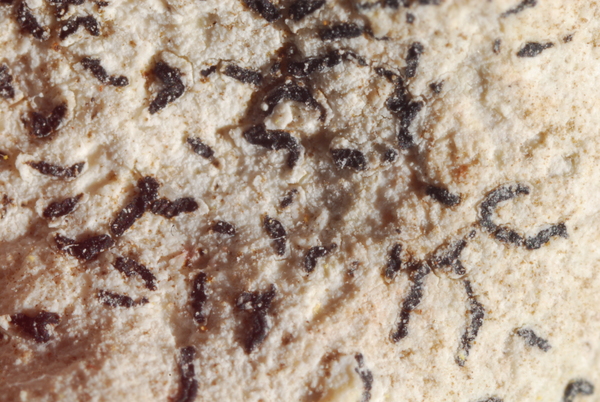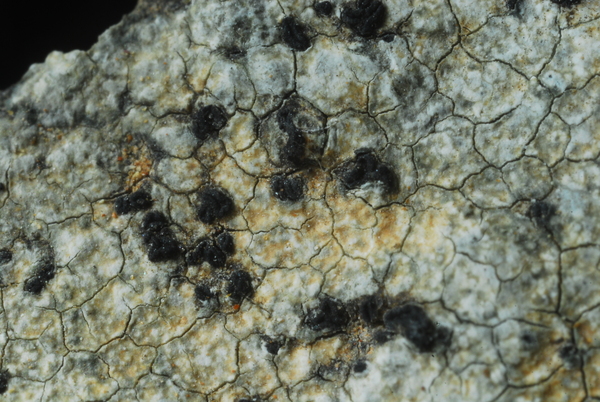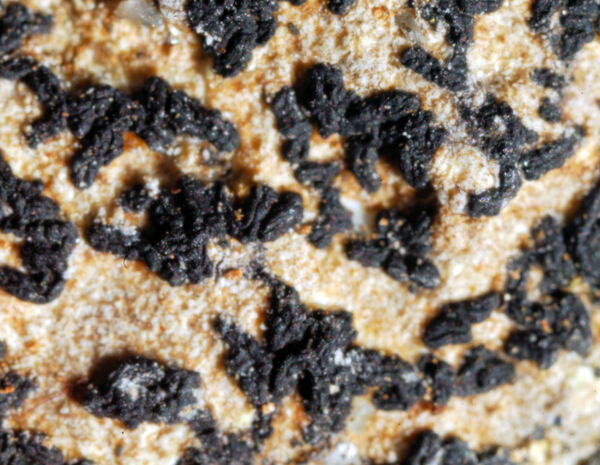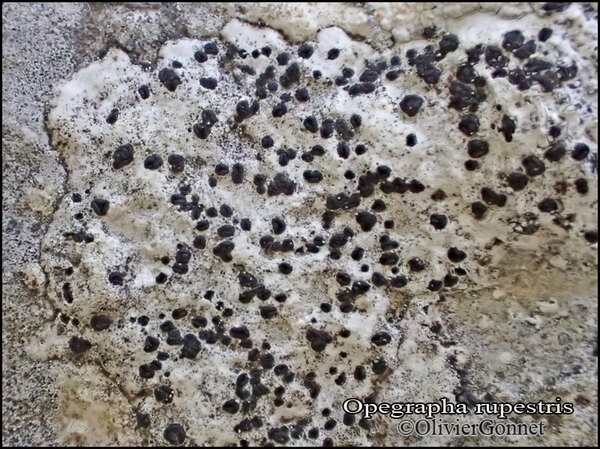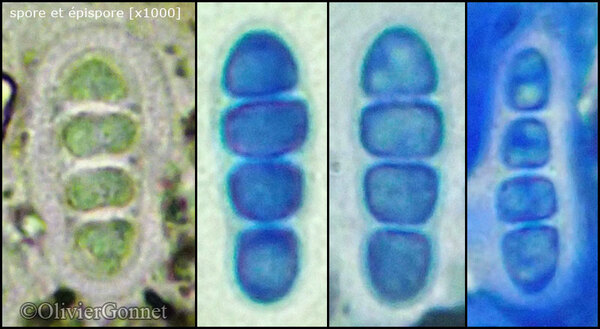Opegrapha rupestris Pers.
Ann. Bot. (Usteri), 5: 20, 1794.
Synonyms: Leciographa monspeliensis (Nyl.) Müll. Arg.; Opegrapha monspeliensis Nyl.; Opegrapha mougeotii var. garganica Jatta; Opegrapha opaca Nyl.; Opegrapha saxatilis DC. non auct.; Opegrapha saxicola Ach. non auct.; Opegrapha sbarbaronis B. de Lesd.; Opegrapha semicincta f. aggregata Werner; Opegrapha semicincta Zahlbr.
Distribution: N - VG (Castello 2002, Martellos & Castello 2004, Hafellner 2011), Frl (Hafellner 2011), Ven (Nascimbene & Caniglia 2003c), TAA (Brackel 2016), Lomb, Piem (Isocrono & al. 2004), Lig (Valcuvia & al. 2000). C - Tosc (Tretiach & al. 2008), Umb (Genovesi & Ravera 2001, Ravera & al. 2006), Laz, Abr (Nimis & Tretiach 1999, Gheza & al. 2021), Sar (Vondrák & Kocourková 2008, Brackel 2016, Brackel 2016). S - Camp (Ricciardi & al. 2000, Aprile & al. 2002, 2003b, Nimis & Tretiach 2004, Garofalo & al. 2010), Pugl (Nimis & Tretiach 1999, Durini & Medagli 2002, Brackel 2011, 2016), Cal (Puntillo 1996, Brackel 2016), Si (Nimis & al. 1994, 1996b, Grillo 1998, Grillo & Caniglia 2004, Caniglia & Grillo 2005, 2006, Vondrák & Kocourková 2008, Liistro & Cataldo 2011, Brackel 2016).
Description: Thallus inapparent, not lichenized, developing on the thalli of Bagliettoa- and Verrucaria-species. Apothecia at first isodiametric and resembling perithecia, then more or less elongate, black, epruinose, 0.2-1 x 0.2-0.3 mm, raised, often gathered in small clusters, with a slit-like disc and a black margin. Proper exciple black, carbonaceous, usually not extending below the hymenium, K- or K+ red-brown; epithecium brown, K-; hymenium colourless, K/I+ blue, the upper part brownish and I+ blue, the lower part I+ reddish; hypothecium colourless to yellowish brown. Asci 8-spored, broadly clavate, Opegrapha-type. Ascospores 3-septate, hyaline (finally often brownish and with a verruculose surface), 13-23(-25) x (4-)5-7(-8) μm, with a distinct perispore. Pycnidia more or less immersed, black. Conidia 3-5 x 0.5-1.2 µm. Photobiont: absent. Spot tests: thallus K-, C-, KC-, P-, UV-. Chemistry: without lichen substances. Note: an ecologically wide-ranging lichenicolous fungus found both in natural habitats (especially shaded niches of calcareous rocks in woodlands), and in moderately disturbed situations (such as on north-facing walls), growing on crustose lichens (especially Bagliettoa and Verrucaria-species).
Growth form: Lichenicolous fungus
Substrata: rocks
Reproductive strategy: mainly sexual
Commonnes-rarity: (info)
Alpine belt: extremely rare
Subalpine belt: very rare
Oromediterranean belt: very rare
Montane belt: common
Submediterranean belt: rather common
Padanian area: extremely rare
Humid submediterranean belt: common
Humid mediterranean belt: rather common
Dry mediterranean belt: very rare
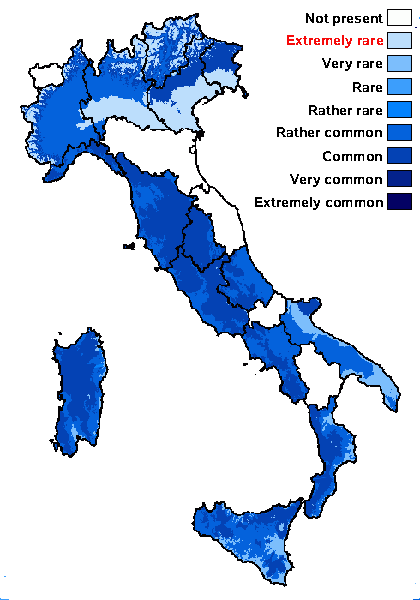
Predictive model
Herbarium samples
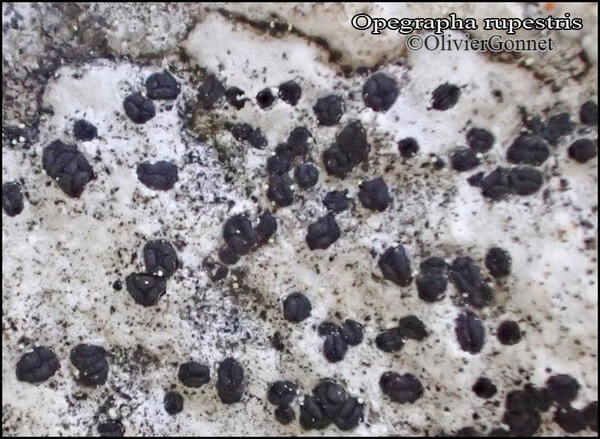
Courtesy Danièle et Olivier Gonnet - Source: https://www.afl-lichenologie.fr/Photos_AFL/Photos_AFL_O/Texte_O/Opegrapha_rupestris.htm
France, 2/6/2015 - Combe Lavaux - Côte-d'Or
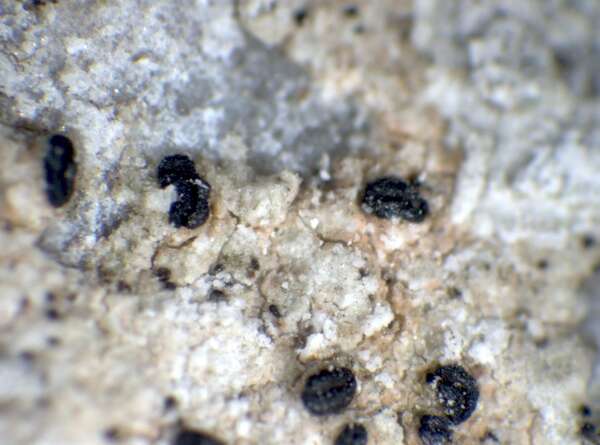

P.L. Nimis; Owner: Department of Life Sciences, University of Trieste
Herbarium: TSB (20110)
2001/11/27
Growth form: Lichenicolous fungus
Substrata: rocks
Reproductive strategy: mainly sexual
Commonnes-rarity: (info)
Alpine belt: extremely rare
Subalpine belt: very rare
Oromediterranean belt: very rare
Montane belt: common
Submediterranean belt: rather common
Padanian area: extremely rare
Humid submediterranean belt: common
Humid mediterranean belt: rather common
Dry mediterranean belt: very rare

Predictive model
| Herbarium samples |

Courtesy Danièle et Olivier Gonnet - Source: https://www.afl-lichenologie.fr/Photos_AFL/Photos_AFL_O/Texte_O/Opegrapha_rupestris.htm
France, 2/6/2015 - Combe Lavaux - Côte-d'Or


 Index Fungorum
Index Fungorum
 GBIF
GBIF
